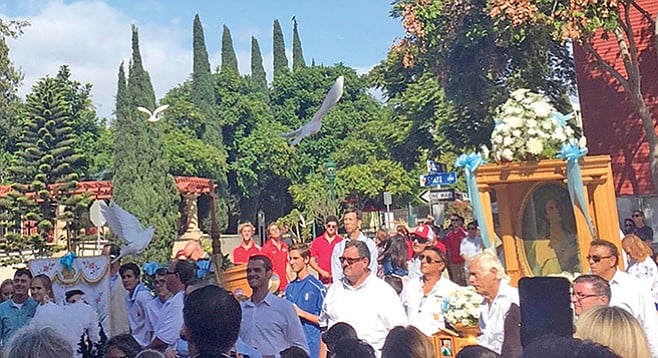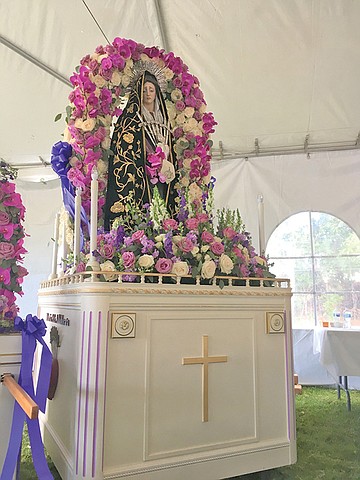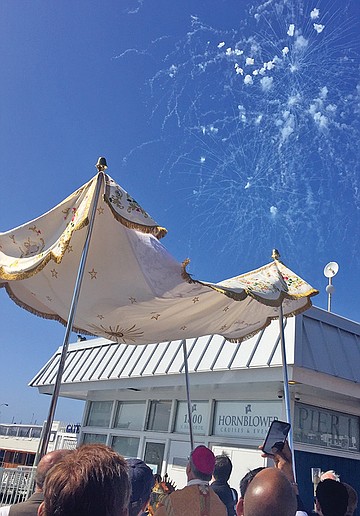 Facebook
Facebook
 X
X
 Instagram
Instagram
 TikTok
TikTok
 Youtube
Youtube

“Julian had a polite but implacable contempt for Judeo-Christian tradition in virtually all its forms. He would deny this if confronted, citing evasively his affection for Dante and Giotto, but anything overtly religious filled him with a pagan alarm; and I believe that like Pliny, whom he resembled in so many respects, he secretly thought it to be a degenerate cult carried to extravagant lengths.”
— Donna Tartt, The Secret History
The Catholic Church today is riven by sexual scandal. Pope Francis, heralded as a leader with special care for the poor and vulnerable, has been embroiled in the controversy over how the credibly accused ex-Cardinal Theodore McCarrick was protected and advanced — alas for the poor and vulnerable. Closer to home, San Diego’s bishop, Francis favorite Robert McElroy, has been embroiled in the controversy over why he failed to advance Dr. Richard Sipe’s allegations about McCarrick to the proper authorities, and is now suffering the anguished bleats of an agitated flock during “listening sessions” throughout his diocese.

But you wouldn’t have known that on October 7 in Little Italy’s Amici Park, standing under the cavernous white tent and listening to the trumpets tootle the opening to “O Del Rosario” as Our Lady of the Rosary Church celebrated its 10th annual Festa honoring its societies dedicated to the Virgin Mary: the Santo Rosario society (est. 1923), of course, and Madonna del Lume (est. 1940), Madonna Addolorata (est. 1940), Madonna del Paradiso (est. 1960), and Madonna Lauretana (est. 2015). The Virgin as she was variously venerated in the Sicilian and Italian hometowns of the fishermen who built the church and then worshipped inside it.
As the societies processed in ahead of Auxiliary Bishop John Dolan — each with its own embroidered heavy satin banner, its own court of rose-decked princesses, its own ribbons and medals and rituals (“Viva Madonna del Lume, viva!”) — the choir raised those fishermen’s cry to heaven:
O del Rosario, vergine bella, nella tempesta propizie noi. O beautiful virgin of the rosary, who intercedes for us during the storm

Whatever storms were raging, you wouldn’t have suspected them from the after-Mass procession down to the Embarcadero for daytime fireworks and the blessing of the boats, the Bishop laboring under both a canopy and a golden mantle as he bore a monstrance displaying a consecrated host, the priest leading the recitation of the rosary through a bullhorn, the marching bands keeping time, the crowds of the curious pausing their Sunday celebrations to see what the fuss was about — a fuss that concluded with the release of white doves from into the clear blue sky above the church. Extravagant lengths, indeed.
In Tartt’s novel, Julian grants, “Well, whatever one thinks of the Roman Church, it is a worthy and powerful foe.”


“Julian had a polite but implacable contempt for Judeo-Christian tradition in virtually all its forms. He would deny this if confronted, citing evasively his affection for Dante and Giotto, but anything overtly religious filled him with a pagan alarm; and I believe that like Pliny, whom he resembled in so many respects, he secretly thought it to be a degenerate cult carried to extravagant lengths.”
— Donna Tartt, The Secret History
The Catholic Church today is riven by sexual scandal. Pope Francis, heralded as a leader with special care for the poor and vulnerable, has been embroiled in the controversy over how the credibly accused ex-Cardinal Theodore McCarrick was protected and advanced — alas for the poor and vulnerable. Closer to home, San Diego’s bishop, Francis favorite Robert McElroy, has been embroiled in the controversy over why he failed to advance Dr. Richard Sipe’s allegations about McCarrick to the proper authorities, and is now suffering the anguished bleats of an agitated flock during “listening sessions” throughout his diocese.

But you wouldn’t have known that on October 7 in Little Italy’s Amici Park, standing under the cavernous white tent and listening to the trumpets tootle the opening to “O Del Rosario” as Our Lady of the Rosary Church celebrated its 10th annual Festa honoring its societies dedicated to the Virgin Mary: the Santo Rosario society (est. 1923), of course, and Madonna del Lume (est. 1940), Madonna Addolorata (est. 1940), Madonna del Paradiso (est. 1960), and Madonna Lauretana (est. 2015). The Virgin as she was variously venerated in the Sicilian and Italian hometowns of the fishermen who built the church and then worshipped inside it.
As the societies processed in ahead of Auxiliary Bishop John Dolan — each with its own embroidered heavy satin banner, its own court of rose-decked princesses, its own ribbons and medals and rituals (“Viva Madonna del Lume, viva!”) — the choir raised those fishermen’s cry to heaven:
O del Rosario, vergine bella, nella tempesta propizie noi. O beautiful virgin of the rosary, who intercedes for us during the storm

Whatever storms were raging, you wouldn’t have suspected them from the after-Mass procession down to the Embarcadero for daytime fireworks and the blessing of the boats, the Bishop laboring under both a canopy and a golden mantle as he bore a monstrance displaying a consecrated host, the priest leading the recitation of the rosary through a bullhorn, the marching bands keeping time, the crowds of the curious pausing their Sunday celebrations to see what the fuss was about — a fuss that concluded with the release of white doves from into the clear blue sky above the church. Extravagant lengths, indeed.
In Tartt’s novel, Julian grants, “Well, whatever one thinks of the Roman Church, it is a worthy and powerful foe.”
Comments